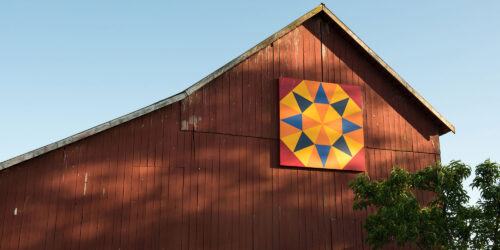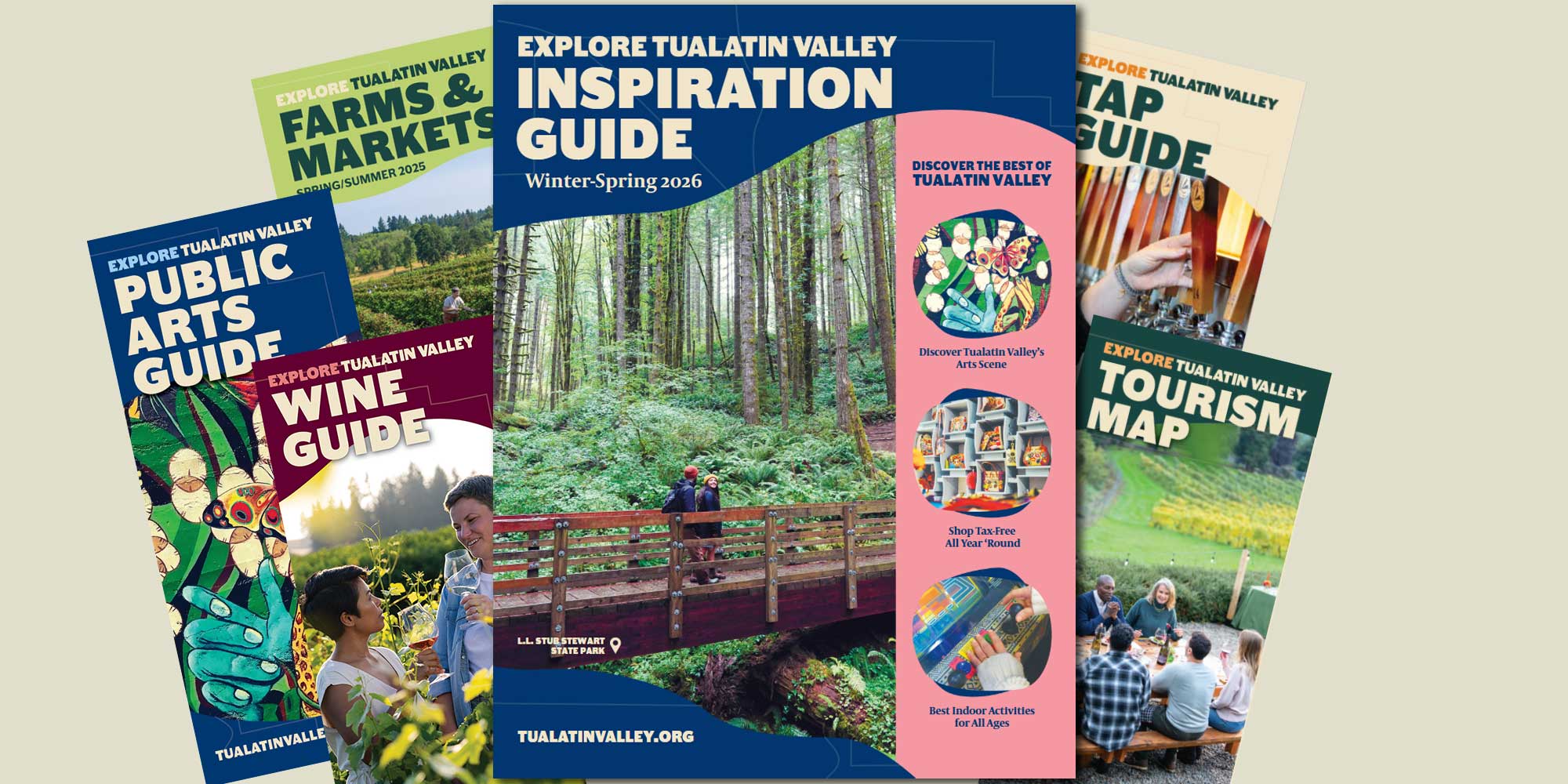Murals, Sculptures and More
There are dozens of murals, sculptures and more on display in cities across Oregon’s Tualatin Valley. Our cities have been fostering substantial public art programs over the years and are now home to many pieces by diverse artists. Works explore the area’s history and heritage, honor its natural areas and show hope for the future. Some cities also host guided art walk tours or have created self-guided tours you can enjoy anytime.
Public Arts Digital Passport
Discover public art throughout Tualatin Valley with the Public Arts mobile passport, a free, curated guide to some of Tualatin Valley’s best public art pieces available directly on your smartphone. Updated regularly with events, art walks, art shows and more, the passport invites you to explore the colorful murals, striking sculptures, luminous glass works and lively events that reflect the culture and diversity of Tualatin Valley. Sign up today.
Quilt Barn Trail

The nostalgia and heritage of quilts can be seen throughout Oregon’s Tualatin Valley with our very own Quilt Barn Trail.
Self-Guided Art Walks in Tualatin Valley
Tualatin Valley is an artist’s enclave. Many talented artists live and create here, and their works of art can be viewed throughout the area along these self-guided art walks.

Beaverton Public Art
Downtown Beaverton’s Public Art Project creates meaningful public places and enhances civic identity through significant works of art that embrace Beaverton’s diverse traditions and history. Take a walk around downtown Beaverton to view the city’s public murals and sculptures, as well as visit private galleries.
Tualatin Art Walk
Explore Tualatin’s art, culture and natural history along the six-mile Tualatin Art Walk. Discover public art pieces, including sculptures, murals mosaics and garden art along this series of interconnected trails.
Tigard Walking Art Tour
The City of Tigard created an interactive map allowing you to take a self-guided walking tour of its growing public art collection. Start at the Jim Griffith Memorial Skatepark and follow the 1.25 mile walk through downtown. Don’t forget to look up, down and all around as you spot art all over downtown Tigard.
Tigard Outdoor Museum
The new Tigard Outdoor Museum offers a taste of arts and culture as you walk down the 3/4-mile Tigard Street Heritage Trail. The walking and biking trail runs along old rail tracks and has a railroad theme. Along the path are plaques recognizing the multicultural history of Tigard and Tualatin Valley. Artists also created pieces from basalt rock inlaid with mosaic tiles to to look like water, representing the waterways that supported the area’s earliest inhabitants.



